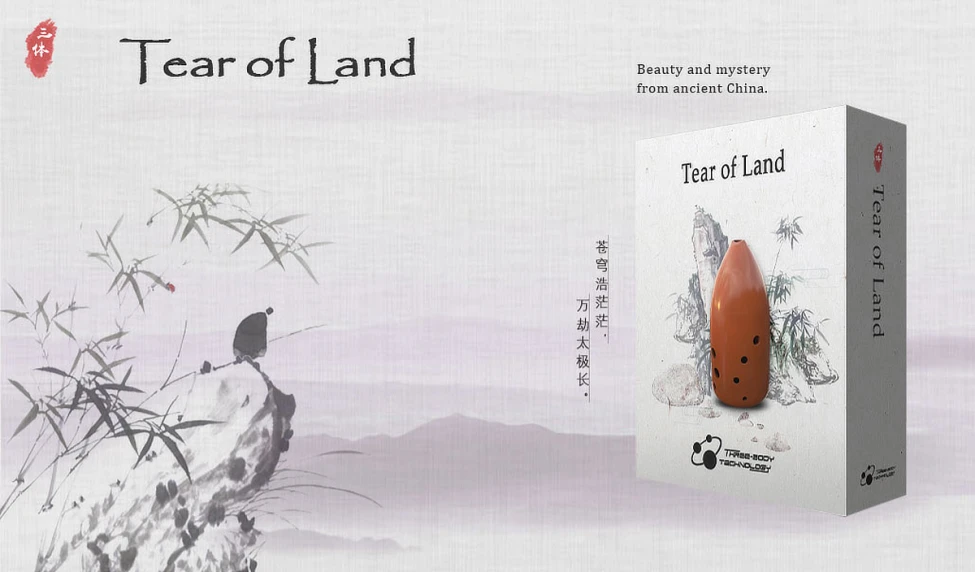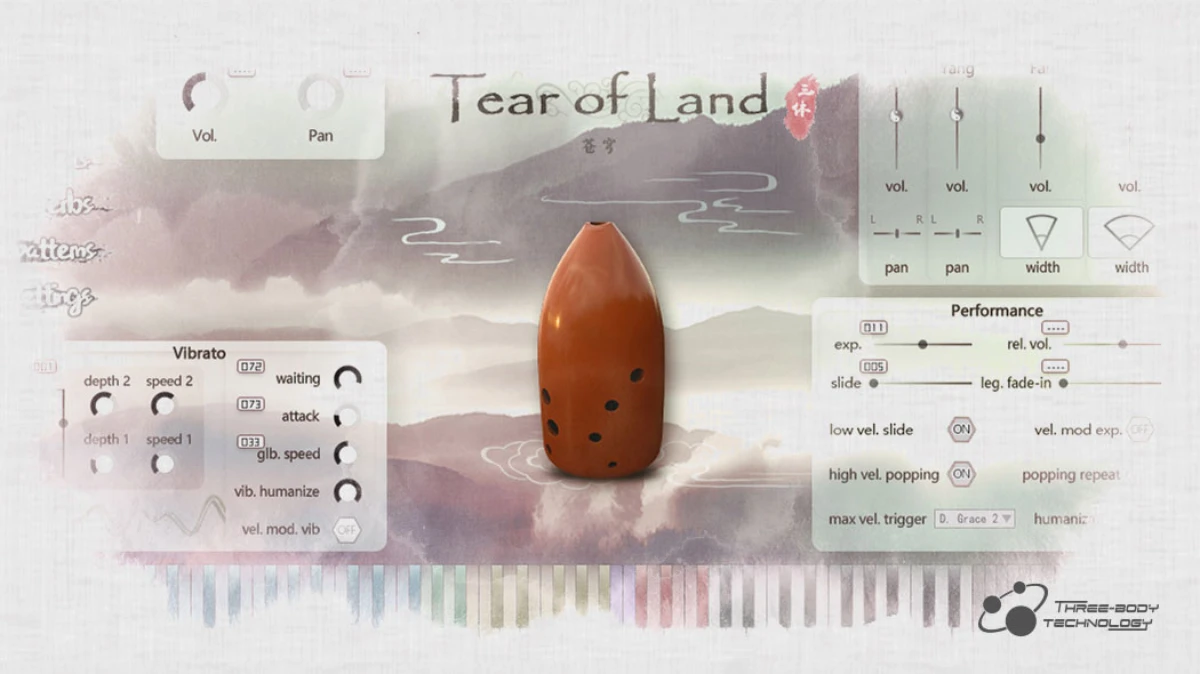
Virtual Chinese Xun Instrument
A Xun is a wind instrument with a deep sound that has a history of about seven thousand years. The earliest discoveries can be found in many archaeological sites, such as the Hemudu site, the Zhaobaogou relics, and the Banpo settlement.
The Xun usually has an egg or pear-shaped body made of ceramic, with a blowhole on the top and several finger holes along one side. Xun is belongs to a group of ritual instruments from ancient times. However, its use was discontinued due to turmoils in the late 19th and early 20th centuries. In the 1980s, Xun playing was revived by archaeologists and artists, and nowadays it is often used in historical themes with dark scenarios.
Features Overview
- Adjustable Sound Field – During the recording of the samples, 5 microphones were used in different positions to capture the room and reverb characteristics. All channels were mixed down to four which you can adjust in the user interface.
- Authentic Performance – By controlling the airflow and fingering, the Xun offers a variety of performances such as mordent, finger pole popping, trill, flutter, vibrato, staccato and gliss. All of these performances can be triggered from within the GUI.
- Realistic Expressions – Tear of Land features realistic recorded articulations that can be freely controlled. Using MIDI CC, tone changes can be implemented as in a real hulusi performance.
- Gliss – With three different speeds of real gliss samples and a sample synthesis technique, Tear of Land can perform gliss at any adjustable speed.
- Vibrato Engine – Based on real samples, Tear of Land’s LFO engine allows realistic and adjustable vibrato.
- Sampling Engine – The self-developed sampling engine features the best sound quality, powerful disk buffer streaming/sampling compression technology and sound fusion technology.

- Legato – The sound between legato notes was recorded in two speeds and is applied in the software according to the playing speed. In addition, “regular legato”, “cry legato” and “popping legato” articulations specific to Chinese Xun have been recorded.
- Spectrum Fusion Legato Technology – To improve legato performance, the Spectrum Fusion Legato process has been developed where two samples are blended into each other to improve legato performance.
- Abundant Sound Effects – Three Body Tech have combined 8 different playing techniques of the Xun, including traditional performance techniques, movie and TV soundtracks, and special techniques commonly used in ancient Chinese style songs, to preserve the natural potential of the Xun as much as possible.
- Convolution Reverb – Tear of Land contains convolution reverb samples of spectacular locations as well as famous Chinese natural and historical monuments.
- Effects Rack – Compressor, EQ, Chorus and Ping-Pong Delay for shaping the sound of the Hulusi to your liking.
- Pattern Library – Tear of Land provides you with a pattern library that allows you to easily realize your works and ideas. You can also create your own patterns by dragging in MIDI clips.
Requirements
- Intel or AMD CPUs with SSE 4.1 instruction set.
- Mac OS X 10.9 / Windows 7.
- 4GB RAM and 2GB disk space.
Plugin Formats Provided:
- Windows: 32-/64-bit VST2, 64-bit AAX
- Mac: 64-bit VST2, Audio Unit and AAX
Extra Requirements on Specific Hosts:
- Logic Pro X or higher (Logic 9 is not supported)
- Only 32-bit VST was supported in Cakewalk Sonar 8.5
Product activation:
An internet connection is required to authorize / activate the product.
